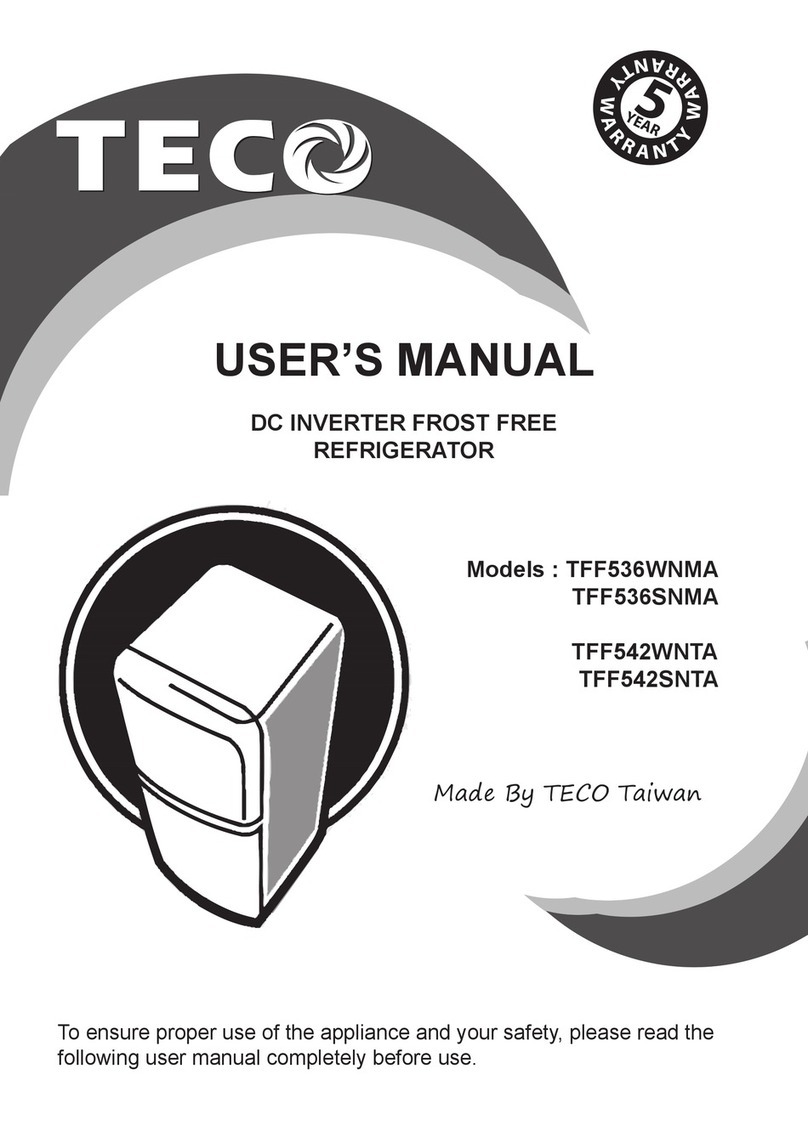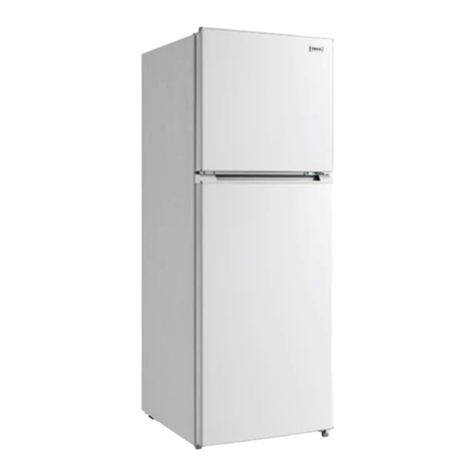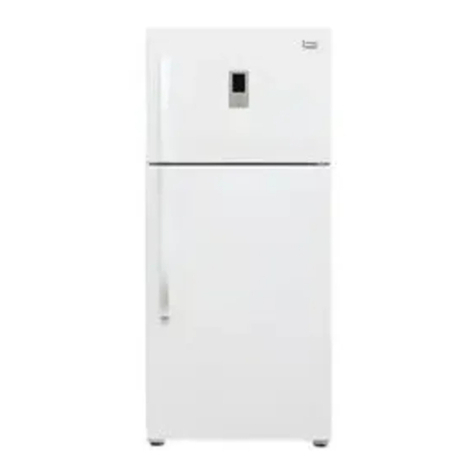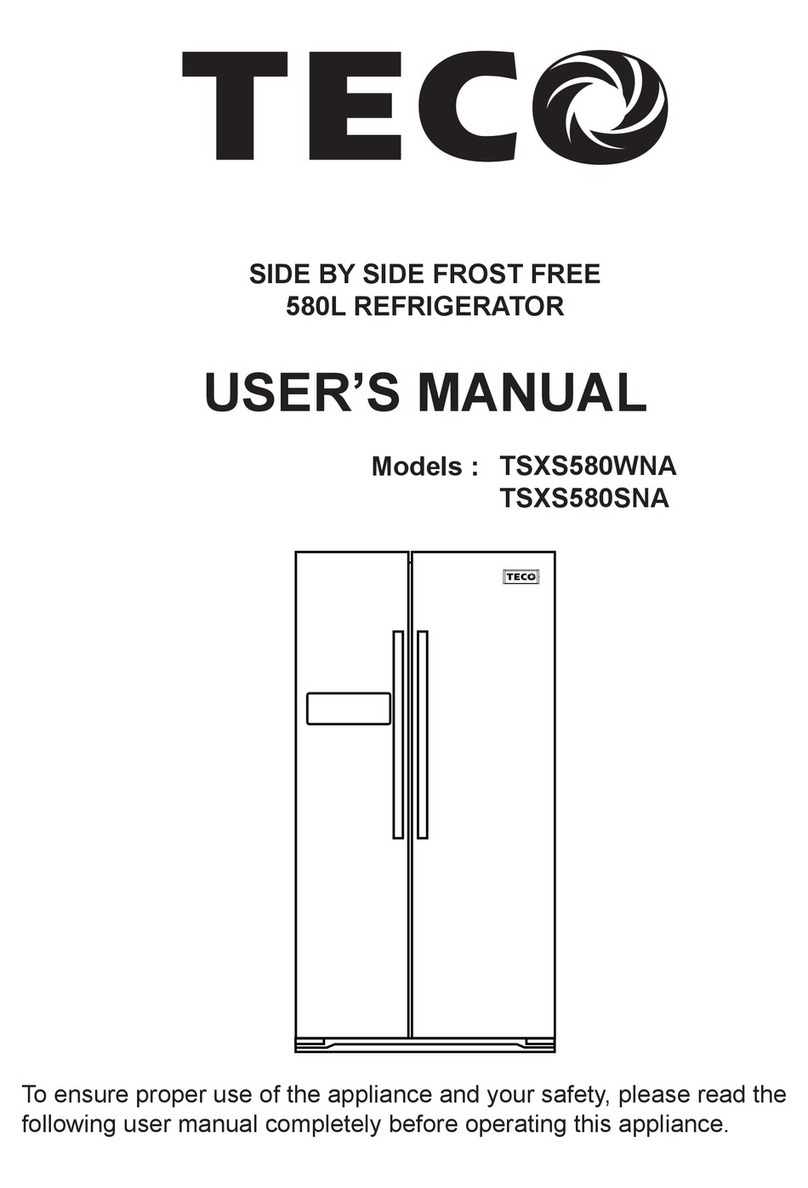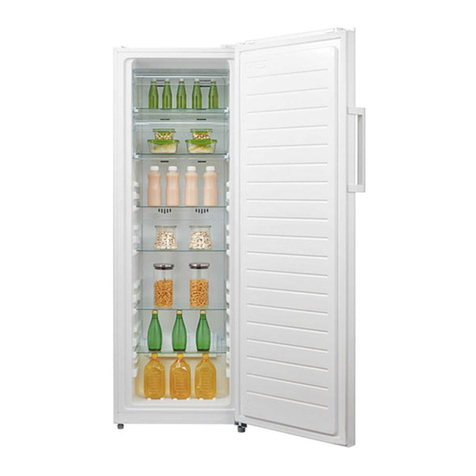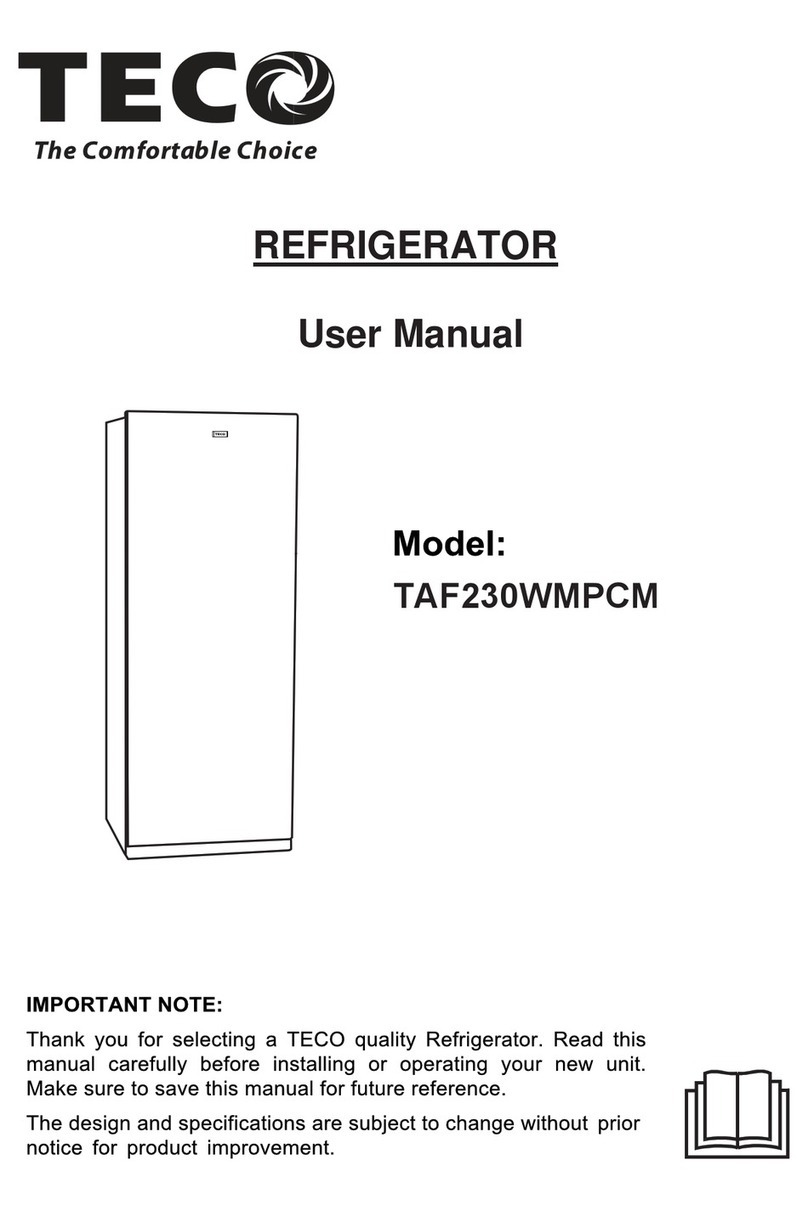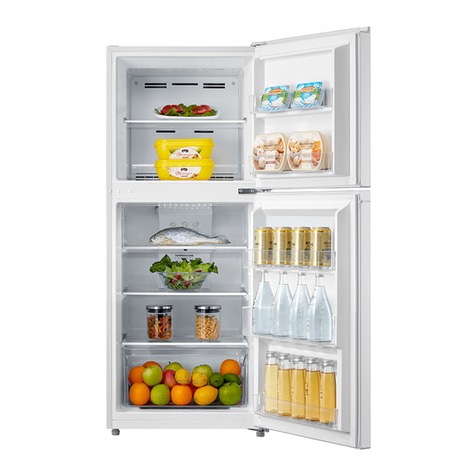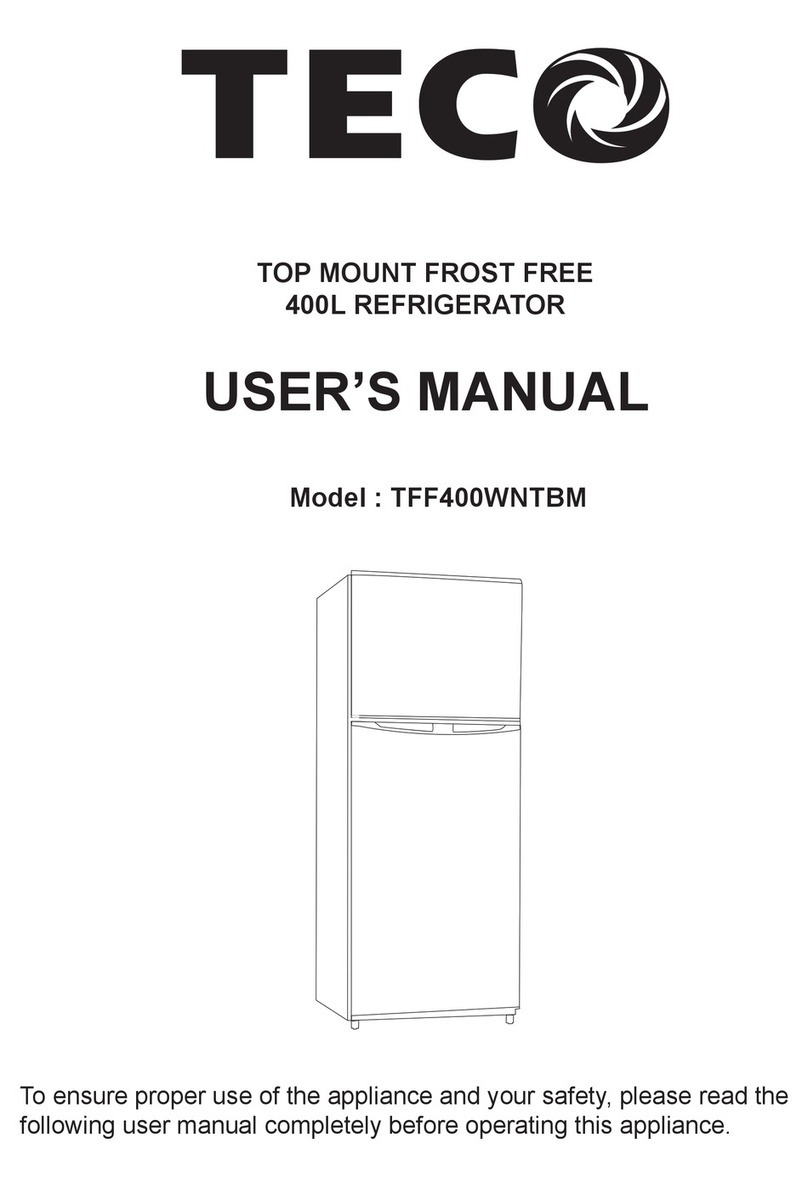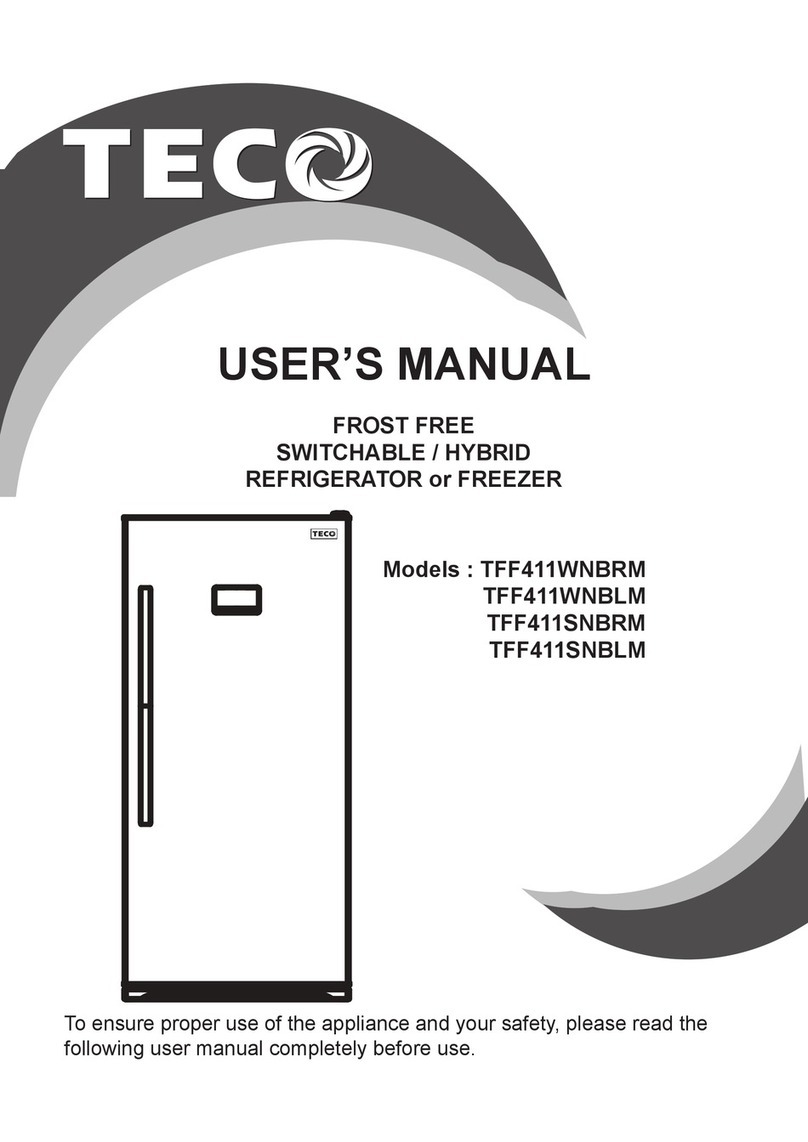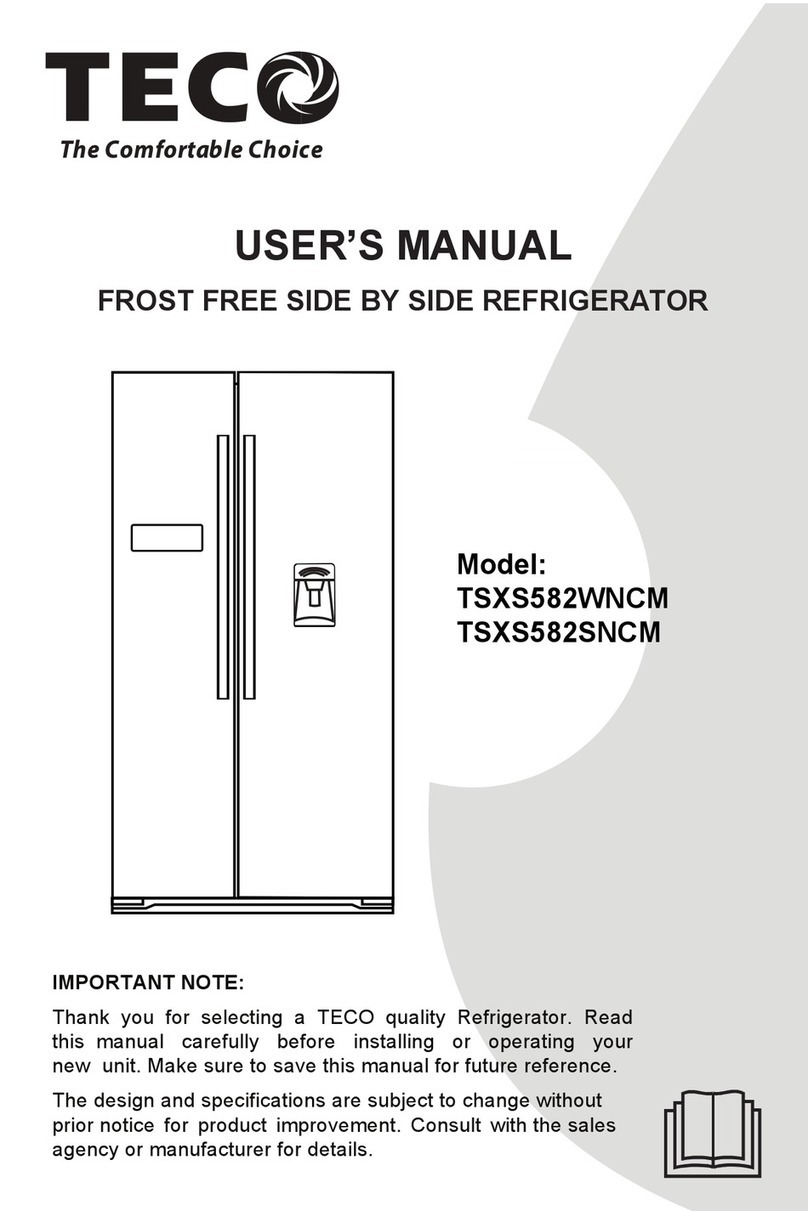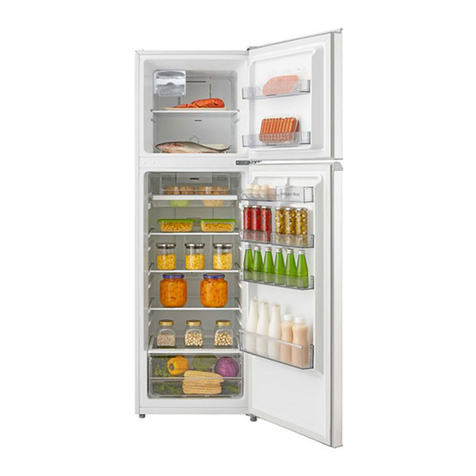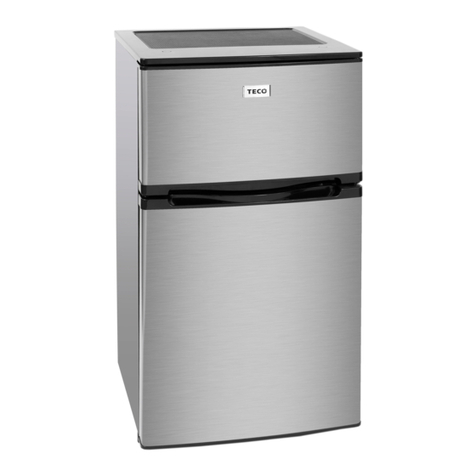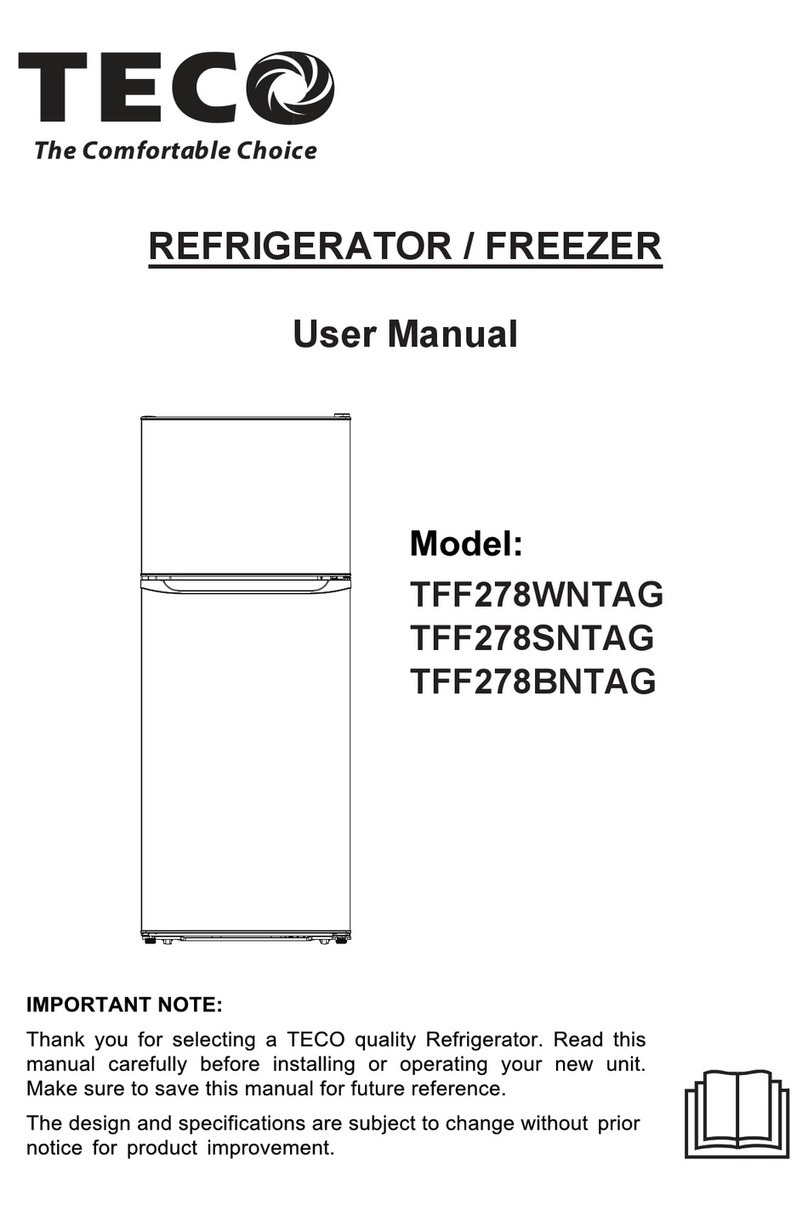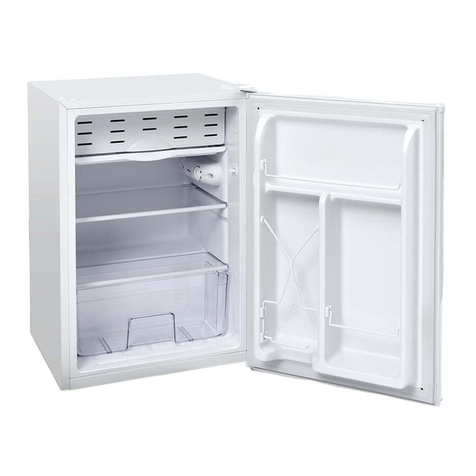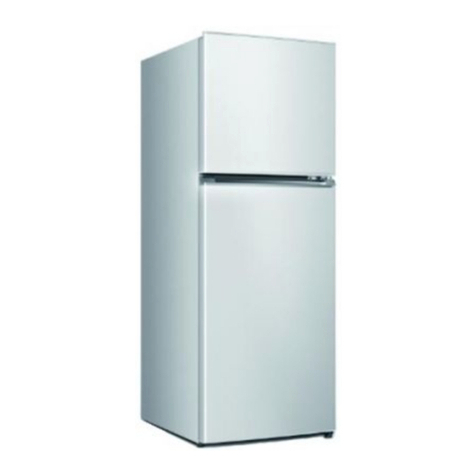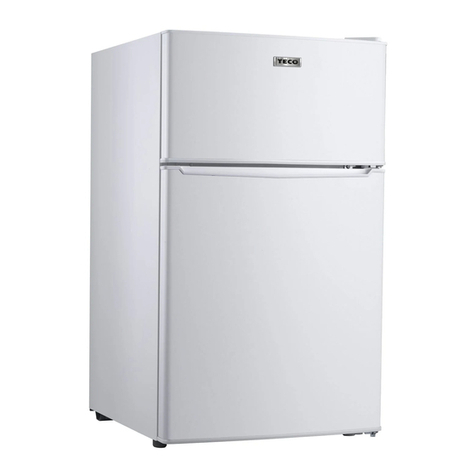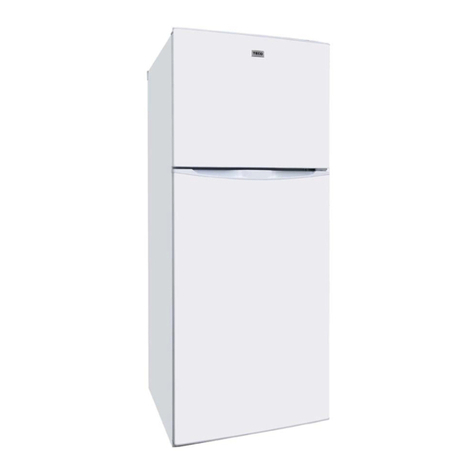
Young children should be supervised to ensure that they do not
play with the appliance.
If the supply cord is damaged, it must be replaced by
the manufacturer, its service agent or similarly qualified
persons in order to avoid a hazard.
When disposing of the appliance, do so only at an
authorised waste disposal centre.
Don’t store inflammable materials such as ether,
benzene, LP gas and glue etc in the refrigerator.
Please remove all the doors before you dispose your refrigerator
and leave the shelves in place to prevent access by children.
Do not expose to flame.
Please keep the appliance away from substances which could
cause ignition.
Before obtaining access to electrical terminals, all electrical supply
circuits must be disconnected.
The fridge is designed to operate on a single phase
power supply within a voltage range of 220~240V/50Hz.
Don’t splash water on the rear of the appliance,
for it may cause malfunction or electric shock.
Containers with flammable gases or liquids can leak at
low temperature. There is a risk of explosion.
Do not store any container with flammable materials such
as spray cans in the refrigerator.
Do not operate any electrical appliance in the refrigerator (e.g.
electric ice cream makers, mixers etc.).
Before cleaning the appliance, always switch off the appliance
and unplug it, or pull the house fuse or switch off the circuit
breaker.
Safety of children
Packaging (e.g. wraps, polystyrene) can be dangerous for children. There
is a risk of suffocation. Keep packaging materials away from children.
Remember to dispose of old appliances in accordance with local laws.
Pull out the mains plug, cut off the mains cable, break or remove spring or
bolt catches if fixed and ensure that children cannot lock themselves in the
appliance when playing (there is risk of suffocation) or involve themselves
in other dangers, for children cannot recognize the hazard present in
household appliances themselves. Therefore, it is very important for
parents to make adequate supervision and never let children play with the
appliance.
2

